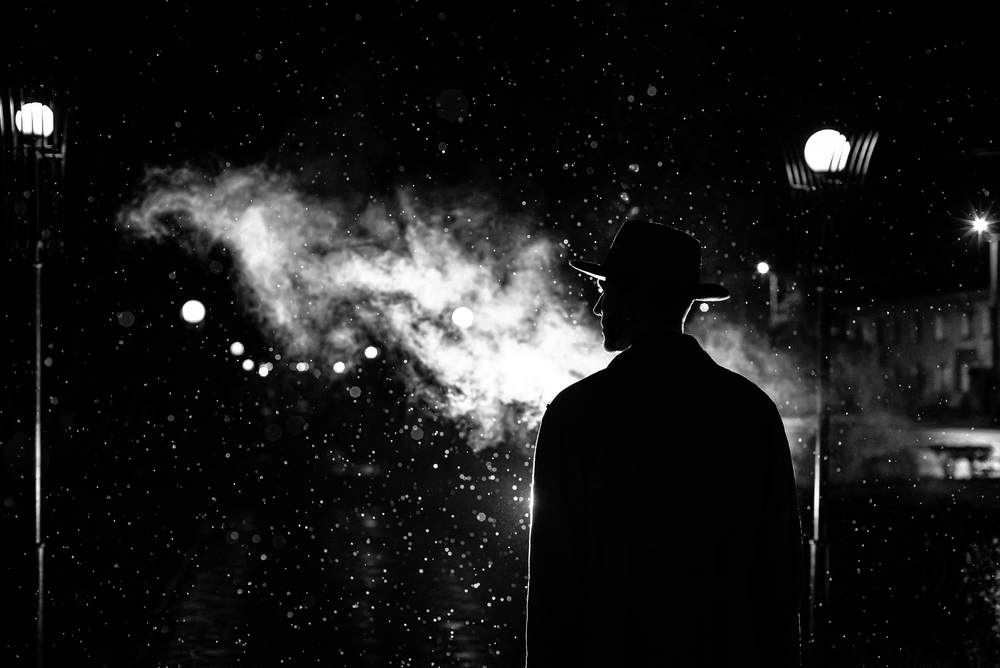Neon Noir: The Electrifying Revival of a Cinematic Subgenre
In the shadowy alleys of modern cinema, a vibrant resurgence is taking place. Neon noir, a subgenre that marries the gritty essence of classic film noir with the pulsating aesthetics of neon-soaked cityscapes, is experiencing a renaissance. This electrifying fusion of old and new has captivated audiences and filmmakers alike, offering a fresh lens through which to explore timeless themes of moral ambiguity, urban decay, and human nature. As we delve into the neon-lit world of this cinematic phenomenon, we'll uncover its origins, examine its current incarnations, and speculate on its future in the ever-evolving landscape of film.

Aesthetic Alchemy: Blending Light and Shadow
At the heart of neon noir lies a striking visual contrast. The genre juxtaposes the inky blacks and stark shadows of traditional noir with the vibrant, often garish neon lights of urban landscapes. This creates a world that is simultaneously alluring and threatening, beautiful and decayed. Cinematographers and production designers play with color palettes that emphasize blues, purples, and pinks, creating an almost dreamlike atmosphere that heightens the sense of unreality and moral ambiguity.
Themes in the Neon Glow
While neon noir borrows many thematic elements from its predecessor, it often explores them through a more contemporary lens. Alienation in the digital age, the blurring lines between reality and virtual worlds, and the corruption of power in modern society are common threads. Characters in neon noir often find themselves adrift in a world that’s both familiar and deeply unsettling, mirroring the genre’s visual dichotomy.
Contemporary Neon Noir: A New Wave
In recent years, there has been a notable uptick in films and television series that embrace the neon noir aesthetic. Nicolas Winding Refn’s Drive (2011) is often credited with reigniting interest in the genre, with its stylized violence and neon-drenched Los Angeles nights. Since then, works like Blade Runner 2049 (2017), Atomic Blonde (2017), and the television series Altered Carbon have continued to push the boundaries of what neon noir can be.
Beyond Film: Neon Noir in Other Media
The influence of neon noir extends beyond cinema. Video games like Cyberpunk 2077 and the Deus Ex series have embraced the aesthetic, creating immersive worlds that players can explore. In literature, authors like William Gibson and Richard K. Morgan have long been weaving tales that fit perfectly within the neon noir framework, influencing both the literary and visual manifestations of the genre.
The Future of Neon Noir
As technology advances, so too does the potential for neon noir. Virtual reality and augmented reality offer new avenues for immersing audiences in these stylized worlds. Additionally, as global cities continue to evolve and grapple with issues of inequality, climate change, and technological integration, neon noir provides a potent lens through which to examine these challenges.
Criticisms and Controversies
Despite its popularity, neon noir is not without its critics. Some argue that the genre’s emphasis on style can come at the expense of substance, prioritizing aesthetics over narrative depth. Others point out that the genre often relies on orientalist tropes, particularly in its depiction of Asian-inspired futuristic cities. As neon noir continues to evolve, filmmakers and creators will need to address these criticisms thoughtfully.
The Enduring Allure of Neon-Lit Narratives
Neon noir stands as a testament to cinema’s ability to reinvent itself, drawing on the past while pushing boldly into the future. Its unique blend of classic storytelling and modern aesthetics continues to captivate audiences, offering a reflection of our own world through a prism of neon and shadow. As we look to the future of cinema, it’s clear that the allure of neon noir will continue to shine brightly, illuminating the darkest corners of our imagination and our society.




